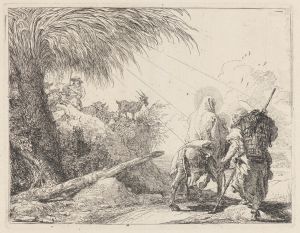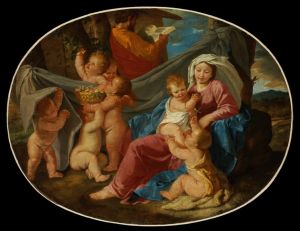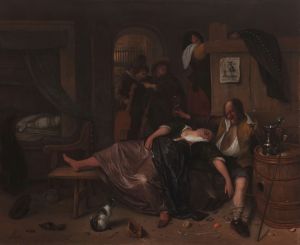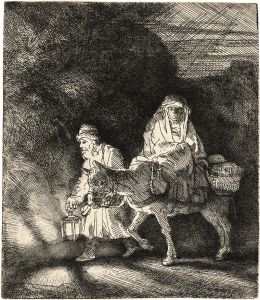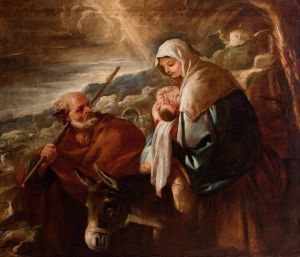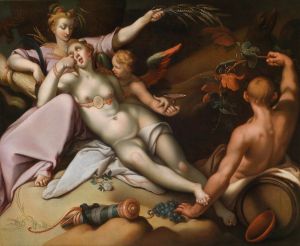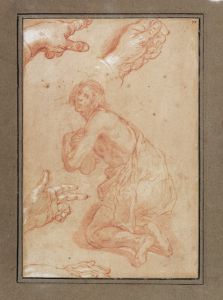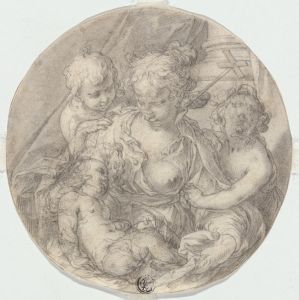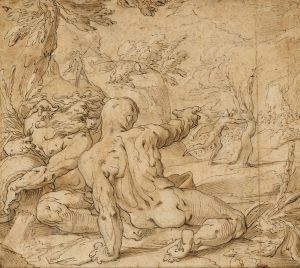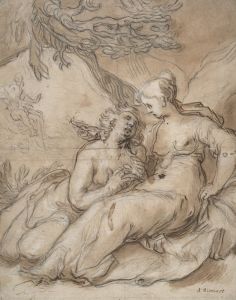
The Flight into Egypt
A hand-painted replica of Abraham Bloemaert’s masterpiece The Flight into Egypt, meticulously crafted by professional artists to capture the true essence of the original. Each piece is created with museum-quality canvas and rare mineral pigments, carefully painted by experienced artists with delicate brushstrokes and rich, layered colors to perfectly recreate the texture of the original artwork. Unlike machine-printed reproductions, this hand-painted version brings the painting to life, infused with the artist’s emotions and skill in every stroke. Whether for personal collection or home decoration, it instantly elevates the artistic atmosphere of any space.
"The Flight into Egypt" is a painting by the Dutch artist Abraham Bloemaert, created in 1593. Bloemaert was a prominent figure in the Dutch Golden Age of painting, known for his versatility and his role in the development of the Utrecht School. This particular work is an example of his religious-themed paintings, which were quite popular during his time.
The painting depicts the biblical scene of the Holy Family's escape to Egypt, as described in the Gospel of Matthew (Matthew 2:13-15). According to the biblical narrative, an angel appeared to Joseph in a dream, warning him that King Herod sought to kill the infant Jesus. In response, Joseph took Mary and Jesus and fled to Egypt, where they stayed until Herod's death.
In Bloemaert's rendition, the Holy Family is shown traveling through a rugged landscape. The composition is carefully balanced, with the figures of Mary, Joseph, and the infant Jesus forming a harmonious group in the foreground. Mary is seated on a donkey, holding the baby Jesus, while Joseph walks beside them, guiding the donkey. The landscape around them is lush and detailed, showcasing Bloemaert's skill in rendering natural scenery. The use of light and shadow in the painting adds depth and drama to the scene, highlighting the urgency and peril of their journey.
Bloemaert's style in "The Flight into Egypt" reflects the influence of both Mannerism and the emerging Baroque movement. The elongated figures and the dynamic composition are characteristic of Mannerist aesthetics, while the naturalistic details and the emotional intensity foreshadow the Baroque sensibilities that would come to dominate European art in the 17th century.
Abraham Bloemaert was born in Gorinchem in 1566 and later moved to Utrecht, where he became a leading figure in the city's artistic community. He was a prolific artist, producing a wide range of works including religious scenes, landscapes, and genre paintings. Bloemaert also played a significant role as a teacher, with many notable artists, such as Gerard van Honthorst and Hendrick ter Brugghen, counting among his pupils.
"The Flight into Egypt" is housed in the Musée des Beaux-Arts in Strasbourg, France. The painting is part of the museum's extensive collection of European art, which spans several centuries and includes works by many renowned artists. The museum's collection provides valuable insights into the development of European art, and Bloemaert's painting is an important example of Dutch religious art from the late 16th century.
Overall, "The Flight into Egypt" by Abraham Bloemaert is a significant work that exemplifies the artist's mastery of composition, his ability to convey narrative through visual means, and his contribution to the artistic movements of his time. The painting remains an important piece for understanding the religious and artistic context of the Dutch Golden Age.






